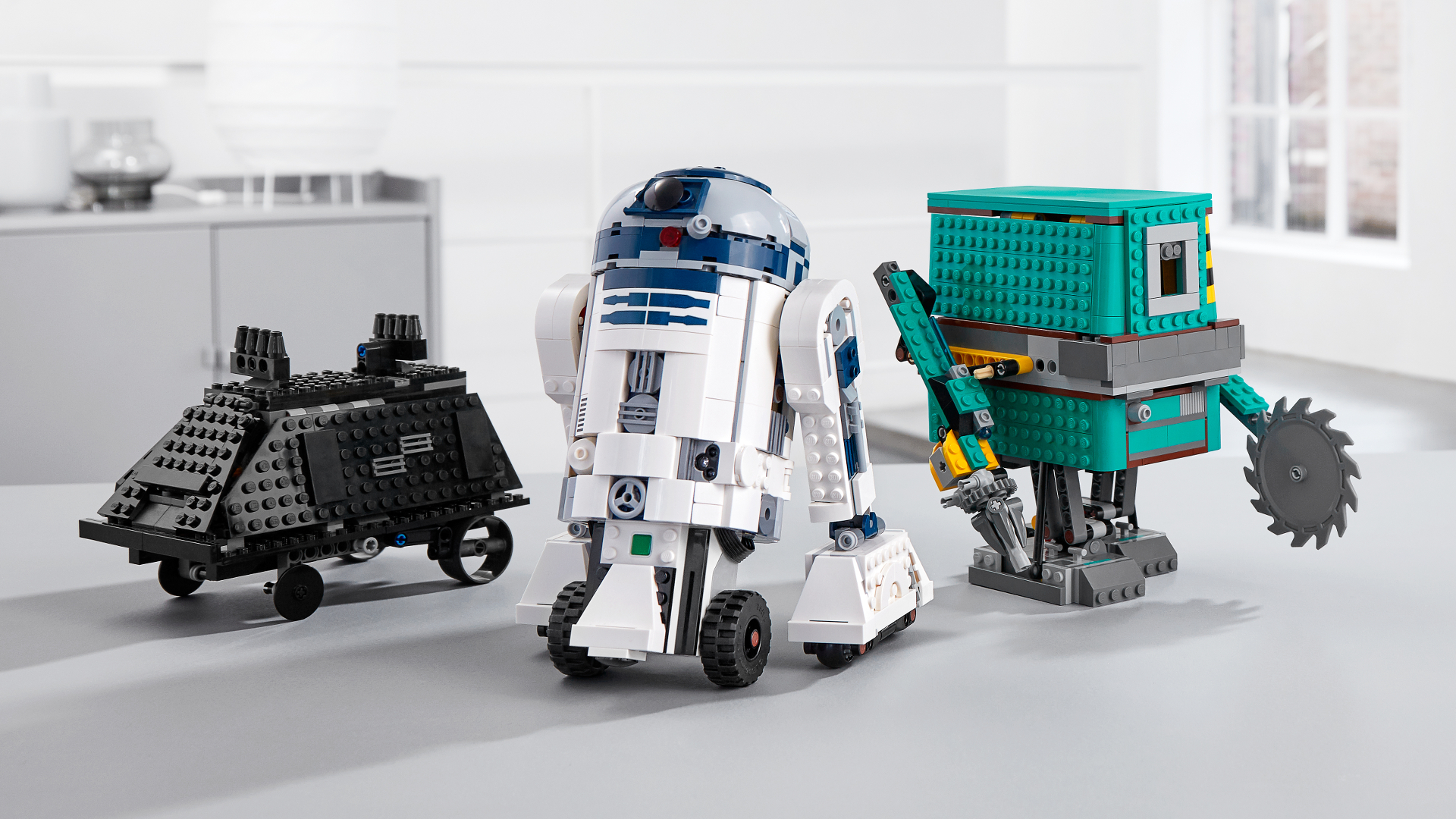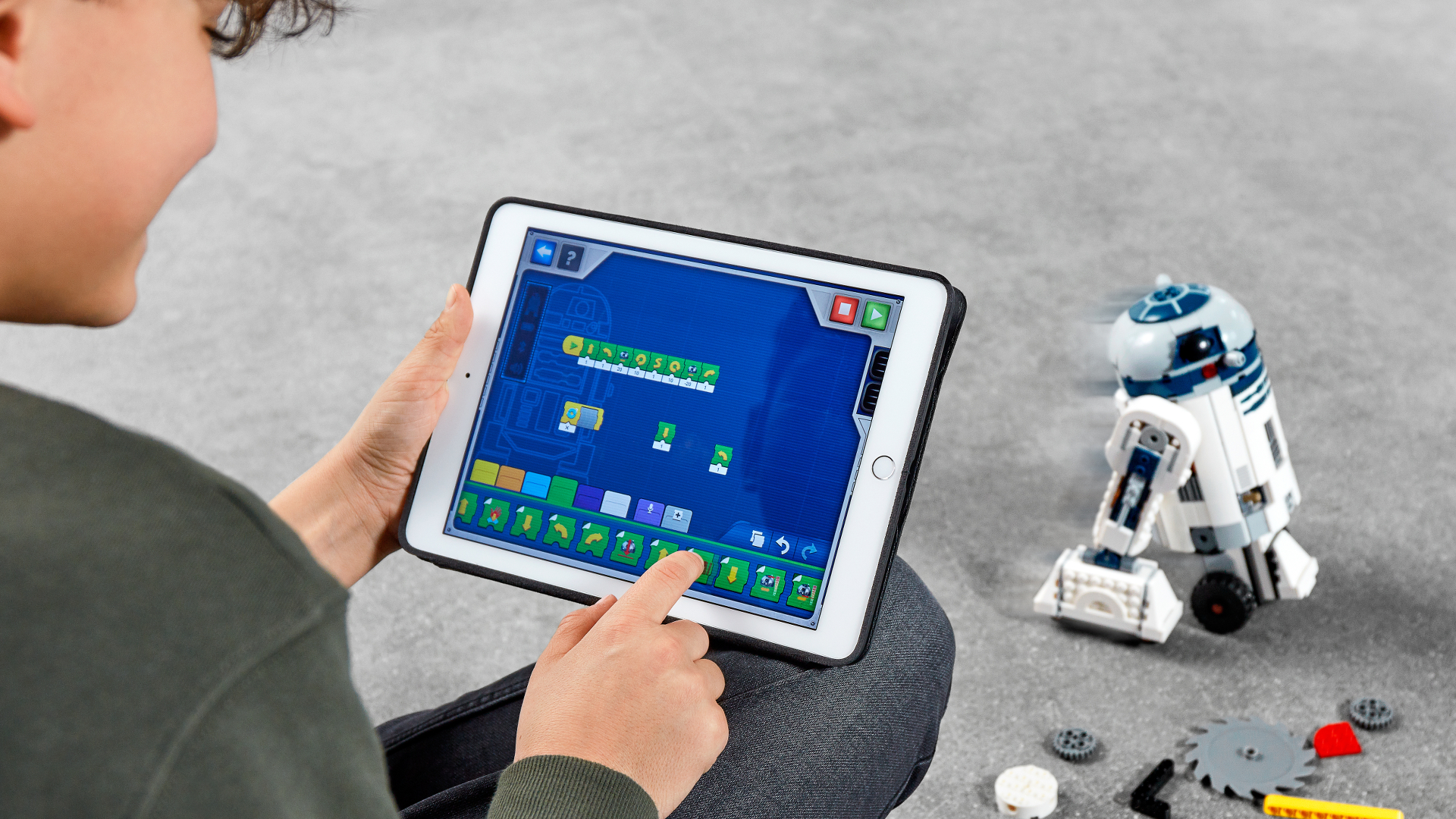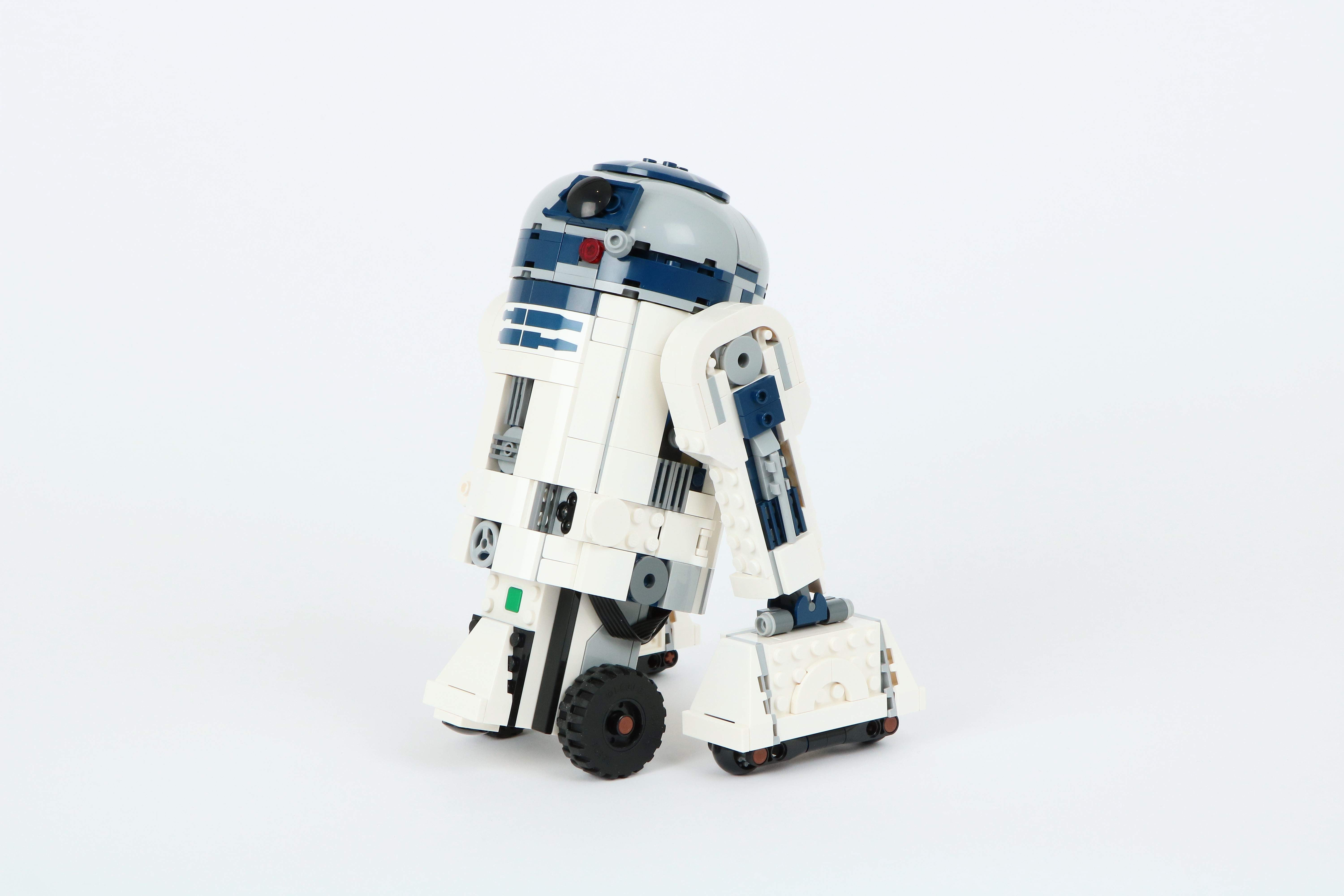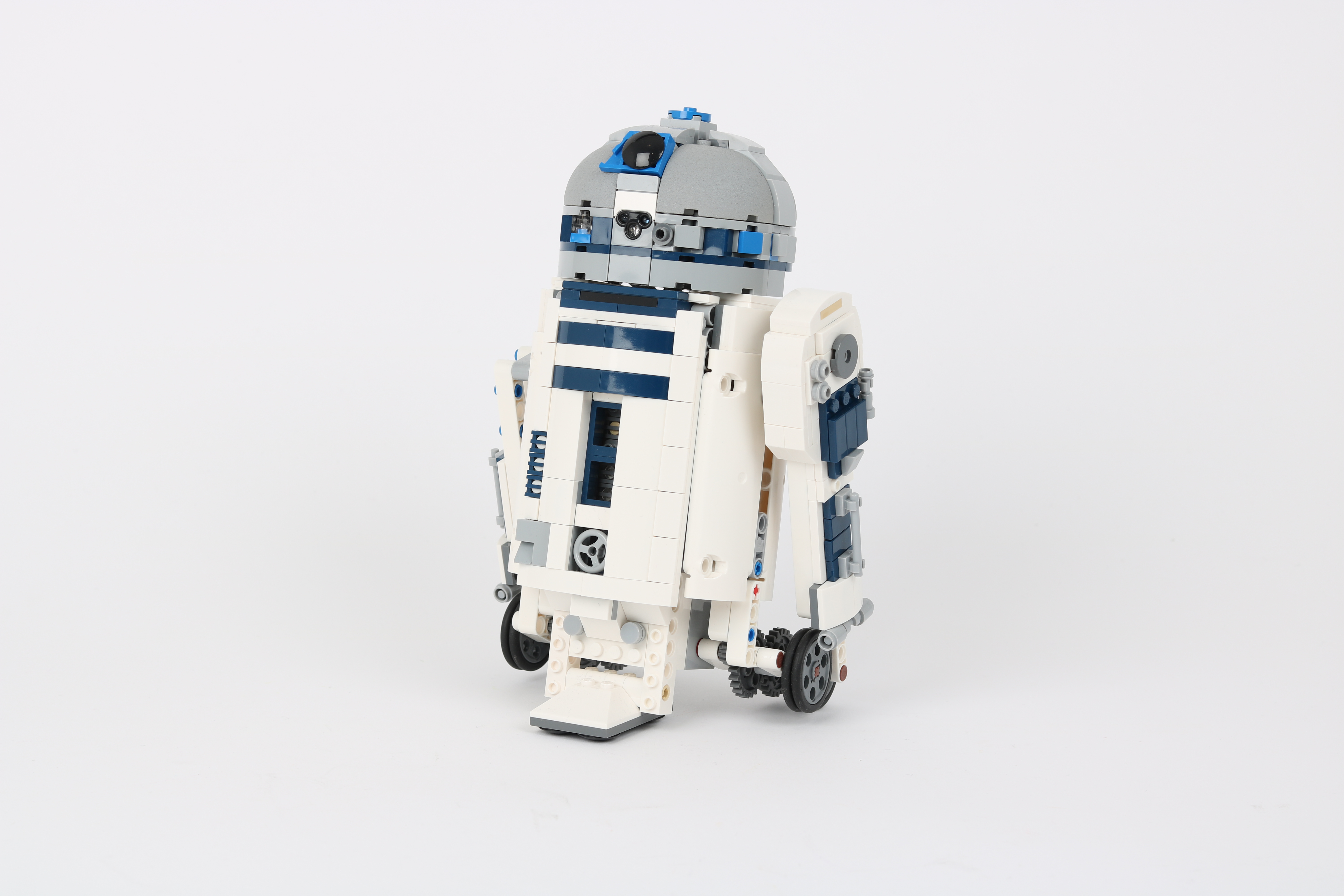Hands-on with Lego's new Star Wars droid set that teaches kids to program
The new Lego Boost Droid Commander set lets kids build R2-D2 and beat missions through the power of coding


Lego’s new big Star Wars set, and one you can expect to see a lot more of as we come towards its September release date, is actually three sets and an app in one box. The Lego Star Wars boost set lets kids build three iconic droids, including R2-D2, and program them through missions using an app.
Like the current Lego Boost set, it’s designed to teach them the core concepts of coding, though programming is done by dragging blocks together on a phone or tablet to form a series of commands. The droids can move around, but also have lots of extra things they can do, partly driven by attachments you can add to them all.
To show just how creative you get with this system, Lego has made a video where it uses an army of these droids to play the Star Wars theme on real instruments, all programmed using the real app you'd use with them.
- See the best Star Wars Lego sets you can buy today
- Find out how Lego Star Wars is made with our interview with its Creative Director
We got to try out the new robots with designers Carl Merriam and Steve Geist, with an early version of the app. The main difference from the current Lego Boost set is that you can have all three robots built and ready to go at any time – the original Boost had five things to build, but you had to take one apart to build the next one.
"We found, from Boost, that the kids actually use only one of the five models, because, of course, once you build one, and then you get into its character, it’s part of your family now,” explains Carl. “And then you have to take apart his face to make the other thing. Kids don’t want to do that.”
He then brings out some of the earlier prototypes of the droids. “These are from the first test we did with kids, where the idea was to make it a regular three-in-one set. And in that test group, we were asking them: ‘Would you take apart R2-D2 to build this other droid?’ And the answer was pretty much: ‘No!’ And we know the kids are going to gravitate towards R2-D2 most times when they first start. So we wanted to make it so they could play around with all the droids, and have more fun.”
As a result, only one part of the Lego Star Wars Boost set needs to be removed: the ‘accelerator’. This is the block that houses the wireless connection and the motors. It slots in and out of each droid with a minimum of fuss, so that kids can switch between which droid’s missions they’re playing though in just a couple of minutes.
Get all the latest news, reviews, deals and buying guides on gorgeous tech, home and active products from the T3 experts
The learning and programming is based around missions in the app – each of the droids has a story to follow, and obviously they’re very different given that R2-D2 is a hero of the Rebellion, the Mouse droid is the most adorable part of the Empire, and Gonk is… well, Gonk.
“One of the big things we’ve tried to do with the missions is actually achieve some of the things that our characters do in the movie,” says Steve. “So you know, R2-D2 can help you fly an X-Wing, he can talk to a computer and decode a message; Gonk can help you power your other droids, since he’s a giant walking battery; and the Mouse can deliver messages. It really infuses the mission with things right out of the universe.
“We have a small story of you crash-landing on Tatooine, and your ship is not quite working. To get your ship up and running, you have to talk to Watto, because he has the parts that you need, obviously, since he’s the junk dealer. Each mission has a small story moment attached to it, and then it has the classic coding canvas, like you’ve seen in Boost, available for kids to play in as much as they want. And then each of them has a small goal that you have to try to achieve while you’re in the coding canvas. And from there, there’s a bit more story wrap-up. When you play each mission, you’ll unlock other missions. So certain stories kind of travel through different missions.”

You can just drag blocks into a sequence to program R2-D2, kind of like building a Lego set…
One of the most interesting elements of what they’re doing here is the extra surprises they’re adding with the missions. It’s not just about learning to move the droids around in more elaborate ways: you’ll actually build new things to add to the droids that are useful for that mission, and are still controlled through the app.
“Most missions have a small build associated with them,” adds Steve, “so that we keep going with the ‘build, code, play’ mentality that we’ve tried to do.”
This will mean building R2-D2’s little computer interface arm, which slots into a matching computer terminal, and rotates to access files, just like in the movie. As it rotates, it reveals different colours on a wheel, which are detected by a sensor on its front. In the case of Gonk, you’ll build assorted weaponry, including a spinning buzzsaw and punching boxing arms.
In all cases, they really wanted to keep the personality of the droids, so that kids will engage with them as much as possible. The Mouse zips around, Gonk wobbles slowly into place, and R2 is full of little touches.
“We decided fairly early on that we wanted him to be able to go from a standing position to a tripod position. That’s just so much of his character, being able to do that. The animation that we get out of that gives a lot of personality. And obviously there’s head movements,” says Steve.
“We probably built five different versions of the mechanisms of R2-D2 transforming, and probably at least five, six or seven of Gonk walking,” adds Karl. “And it’s the same for the Mouse droid. We were trying to figure out different ways to make it work… so another prototype actually opens its flaps the other way. And it has a little gun that can pop out.”

The final version of R2-D2

R2-D2 prototype 1

R2-D2 prototype 2

R2-D2 prototype 3
“Boost’s Creative Toolboxes are age-rated 7+, while ours is 8+. There’s just a couple of little building steps that are a bit challenging for a 7-year-old. And aligning gears for mechanism such as Gonk’s walk is one of those,” says Steve.
The app is still work-in-progress, so while we get to spend some time playing around with making the droids move around the table, we don’t dig too deeply into the missions themselves at this stage. There are a few different planets highlighted to visit, and the team is planning to add more even after launch, potentially.
“We get to see Alderaan for a second before it blows up, and the Death Star, and then Hoth and Bespin. And then when we add more missions, we have the space now to add more planets and add more missions,” explains Steve. “So whether that pushes us into the new trilogy or we finish up with touching on Dagobah – you know, we kind of have to figure it out, still.”
As we’re getting ready to end our look at the new Star Wars Boost set, we admire the teal shade that Gonk comes in, which isn’t a colour we’ve seen in Lego for a long time.
“Yeah. The teal was around 20 years ago now,” says Steve. “I don’t know if you noticed, but this is the same colour scheme as Rock Raiders. I did that on purpose. This, here, is the 20th anniversary of Rock Raiders.”

Matt is T3's former AV and Smart Home Editor (UK), master of all things audiovisual, overseeing our TV, speakers and headphones coverage. He also covered smart home products and large appliances, as well as our toys and games articles. He's can explain both what Dolby Vision IQ is and why the Lego you're building doesn't fit together the way the instructions say, so is truly invaluable. Matt has worked for tech publications for over 10 years, in print and online, including running T3's print magazine and launching its most recent redesign. He's also contributed to a huge number of tech and gaming titles over the years. Say hello if you see him roaming the halls at CES, IFA or Toy Fair. Matt now works for our sister title TechRadar.